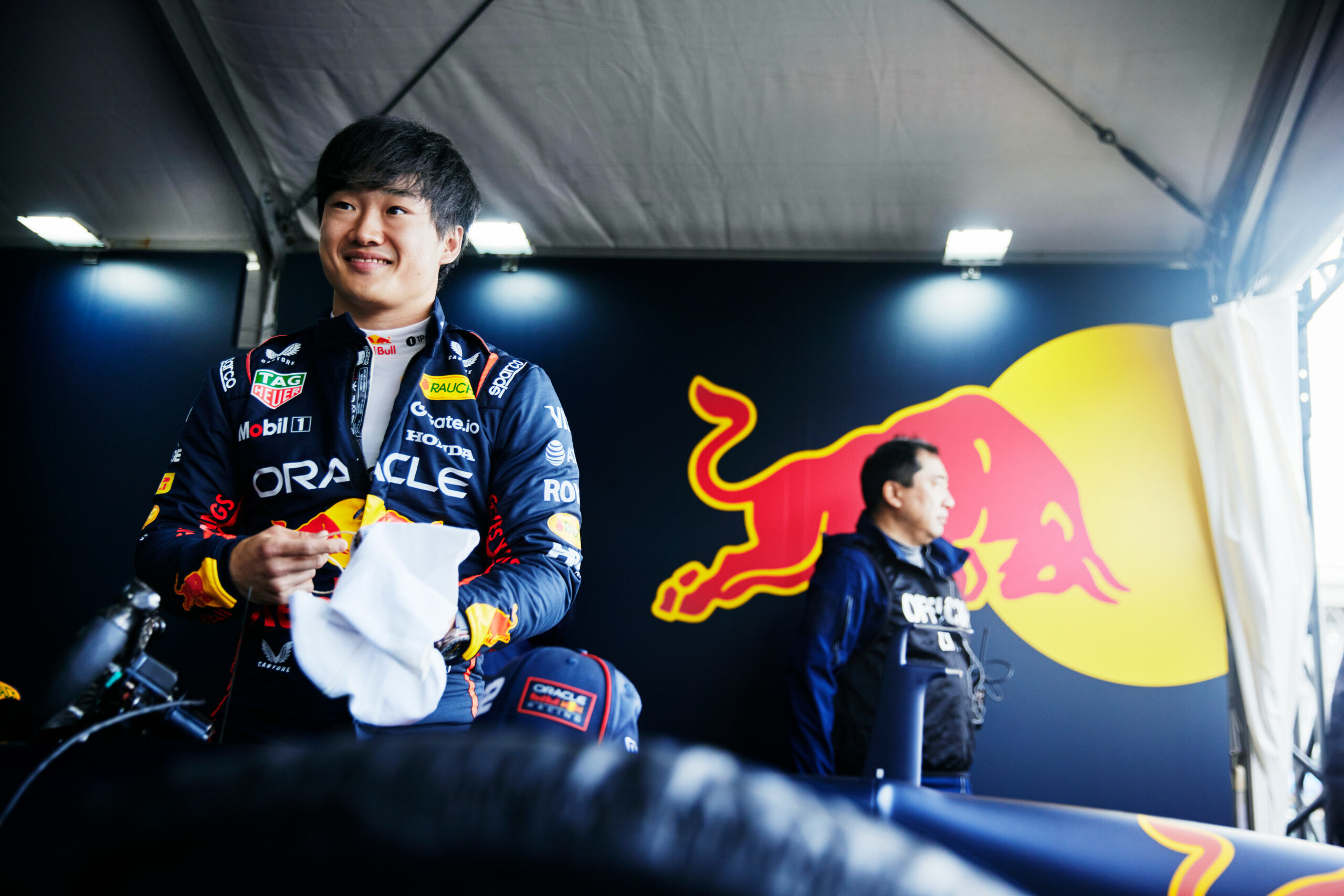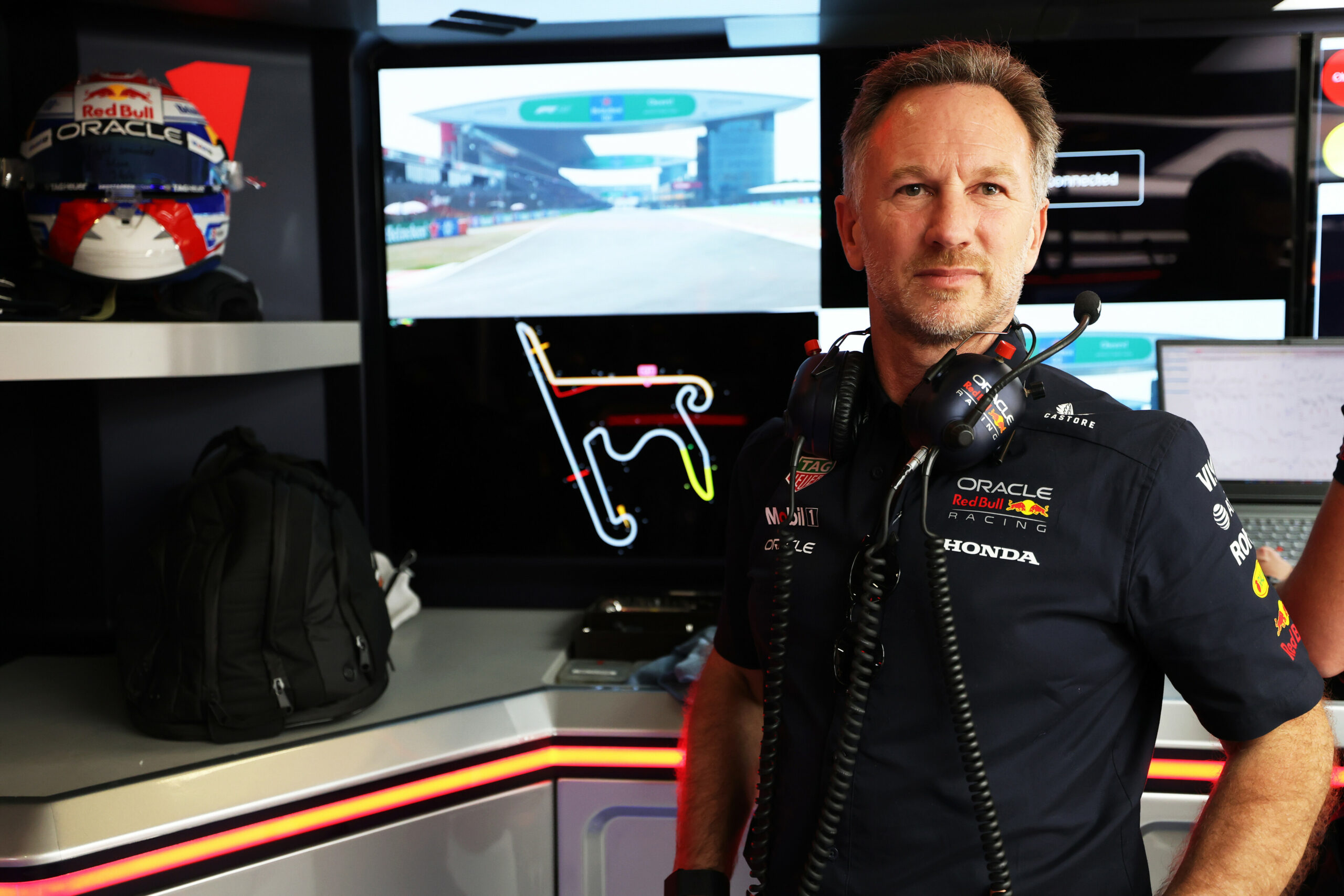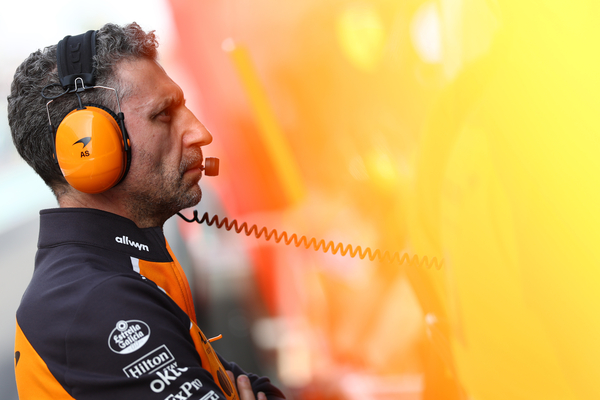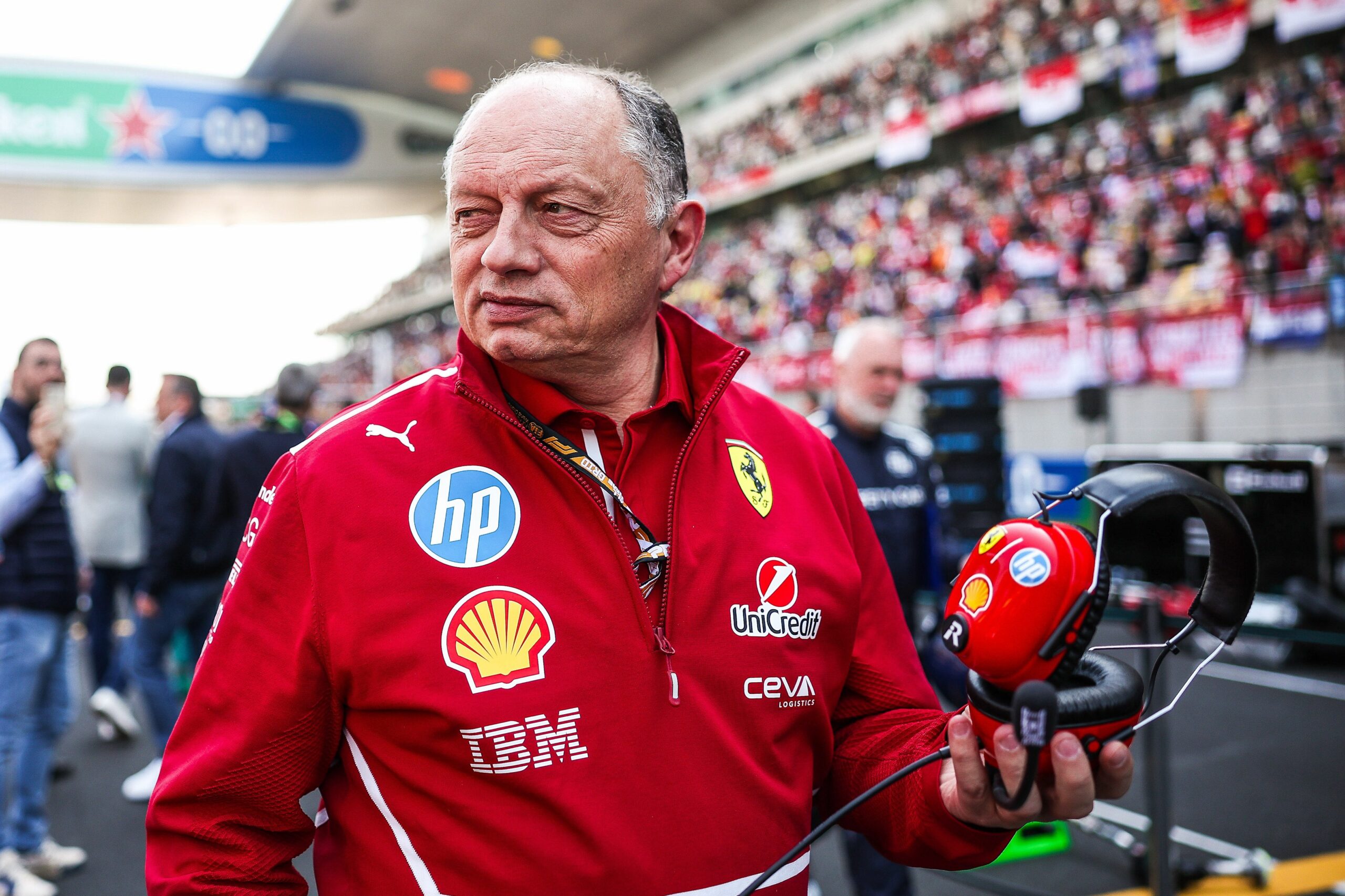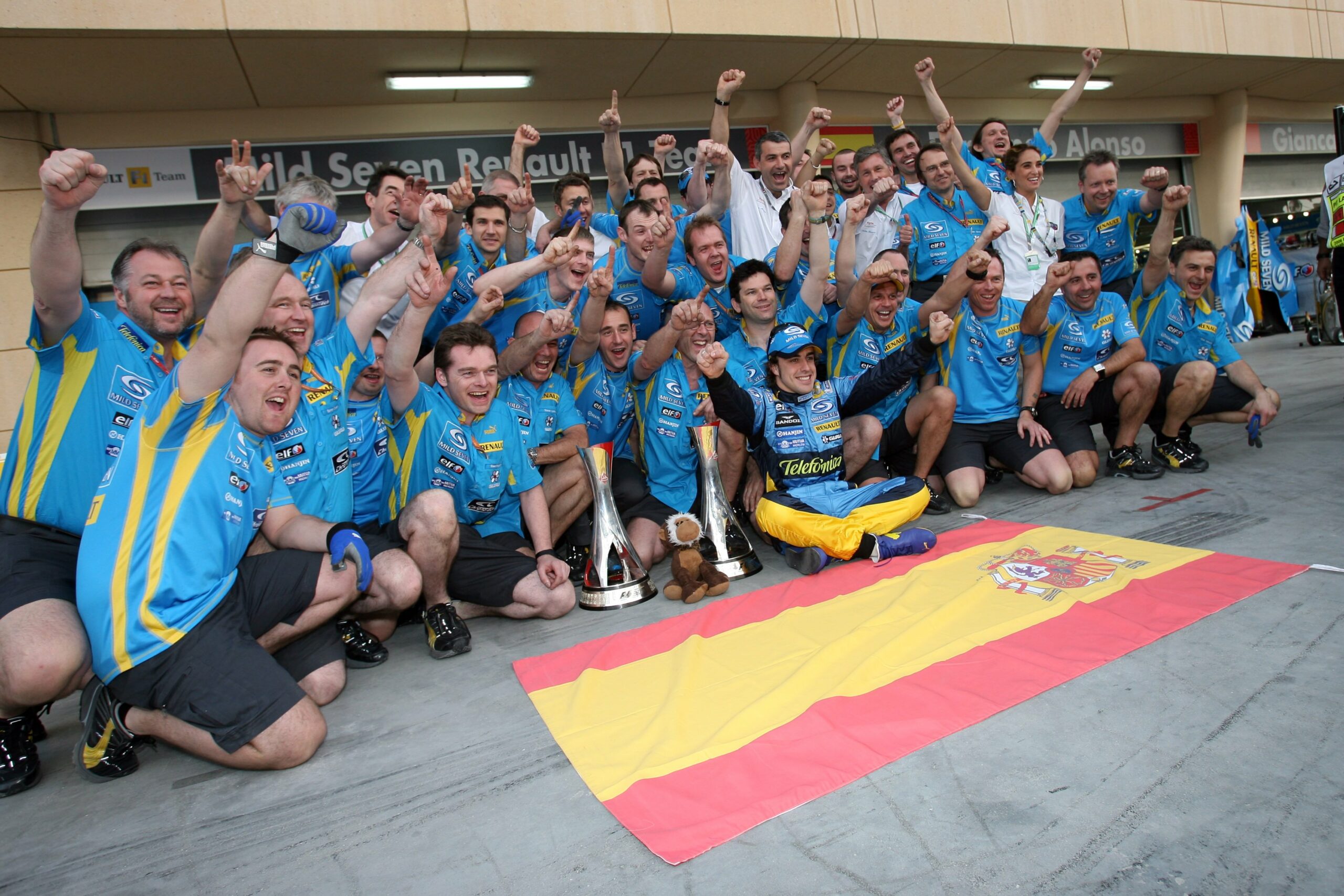
Chris Hessey, Fernando Alonso and the Renault team celebrate victory at the 2006 Bahrain Grand Prix
Photo Credit: Renault F1 Team
Fernando Alonso’s recent defensive masterclass at the São Paulo Grand Prix against Sergio Pérez was the latest in a long list of examples where the Spaniard displayed his extraordinary skills and thinking ability behind the wheel of a Formula One car.
Although he was eventually passed by the Mexican on the penultimate lap after holding him off for over 10 laps in spite of ferocious pressure, the two-time F1 World Champion found a way by on the last one to brilliantly finish P3.
Alonso forced the Red Bull driver into a defensive shape at turn 1 and used DRS to execute a perfect pass heading down to turn 4.
His extremely clever racecraft and the ability to focus on taking a wide line into and out of Junção to get a great exit for the long run down to turn 1 was widely praised and appreciated.
Pit Debrief spoke to Chris Hessey about working with Fernando Alonso. The Brit was the number 1 mechanic on the Spaniard’s car during his and Renault’s title-winning seasons of 2005 and 2006.
After making his debut with the Minardi team in 2001 and massively impressing in the slowest package in the field, Alonso began his Renault journey as a race driver in 2003 following a year on the sidelines as their test driver. The now 42-year-old had already tested for them during the Benetton days in 2000.
He took his first pole in Malaysia on just his second start with Renault. Alonso then claimed his maiden win at the Hungarian Grand Prix later that year.
Hessey says it was clear from the beginning that Alonso was a special talent.
“Yes, straight away we knew he was good.
“He was very easy to work with, very articulate — he knew what he needed when he was explaining details with the car.
“He progressed really really fast.”
It was already clear from winter testing in 2005 that Renault had a shot of winning both championships as they produced a fast and reliable car.
However, the Renault team wanted to play everything down due to the fact Alonso was only 23 when the season started in Melbourne.
“Obviously he was very young at the time, so obviously we kept things quite low-key.
“We obviously knew that this guy is fast and the car we designed and developed, we knew it had great potential.
“That was when we started to build up the team. The engineers and designers had confidence in what they were doing. It was steady progress through the season.”
Heading to Imola for the San Marino Grand Prix, Round 4 of the 2005 season, Alonso’s two wins at Sepang and Bahrain saw him leading the championship by 10 points from former teammate Jarno Trulli.
With polesitter Kimi Räikkönen retiring from the race on lap 9, the Spaniard looked set for a comfortable victory.
However, Michael Schumacher was steaming through in the Ferrari following a mistake in qualifying on Sunday morning that left him down in P13 on the grid.
Hessey explained the intense nature of the rivalry with Ferrari during that period of time.
“It was quite intense. The Ferrari guys were very patriotic, so you knew it wasn’t just a battle between the drivers, it was with the mechanics as well.
“I remember when we used to go down to parc fermé to put the fans on the car and make sure everything is okay, the Ferrari mechanics would give you a little shoulder barge as they walked back out if they came 2nd or 3rd.
“It was quite an intense battle with Ferrari.”
Schumacher caught Alonso in the closing stages and was taking over a second a lap out of him before that.
Nonetheless, Alonso used his superb racing brain to fend off the seven-time World Champion — and it was a feat he would repeat on the last lap of the 2006 Turkish Grand Prix when battling Schumacher for P2 on the day and the title overall.
As Hessey explained to Pit Debrief, he deliberately entered the corners and chicanes slowly to halt Schumacher’s momentum that day at Imola. Alonso would then use the brilliant acceleration of the R25 out of corners to deny the German legend any shot at passing him into corner entry on the brakes.
“There was that battle with Schumacher at Imola — and he was catching Fernando very very fast.
“But Fernando knew he had good acceleration out of the corners. He’d slow down before he got to the chicane — especially the last one before the start/finish line — just to hold Schumacher up. He knew out of that corner his acceleration was better than Schumacher’s Ferrari.
“He was thinking all the time. He still does it to this day.”
Alonso’s brilliant consistency, along with a lot of unreliability and misfortune for Kimi Räikkönen, meant the Spaniard sealed the title with two races to spare at the Brazilian Grand Prix to become the youngest Drivers’ World Champion at the time.
“He did [always hold a solid advantage over Räikkönen]. We had a good season, a good strong season. But obviously you can’t start singing until the end.
“Brazil was a very passionate win for everybody.”
Hessey told a nice personal story of how he was asked by the FIA to help show them the car was fully legal during the standard post-race checks, but Chief Mechanic Jonathan Wheatley [now Sporting Director at Red Bull Racing] ultimately stepped in so he could go and join the celebrations that were taking place in a euphoric Renault garage.
“Even for myself, obviously the cars go into scrutineering straight after the race. The FIA asked me to go inside the fuel tank so they could have a look inside and make sure it was all legal.
“The team were celebrating like mad. The Chief Mechanic at the time, Jonathan Wheatley, he came down and said, ‘your car has just won the championship, get back up to the garage and I’ll do the fuel tank for you’, just so I could be there for the celebrations which had already started.”
As well as his brilliance in Interlagos last month, Alonso has delivered countless other examples of his extra capacity when racing.
For example, he was able to look at a big TV screen during the Miami GP earlier this year and saw Lance Stroll overtaking Alex Albon into turn 1. He could still easily manage his own race in the process.
Hessey explained how he used to badger his race engineer Rod Nelson on the radio for information about where his main competitors [Kimi Räikkönen in 2005 and Michael Schumacher in 2006] were on the circuit as he figured out plans to try and outfox them through strategy or by passing them.
Back in the refuelling era, most passes took place during pit sequences. In and out laps were absolutely massive back then.
“The thing is with Fernando, he’s a thinking driver in all the races.
“He’d be talking to Rod Nelson and he would be asking questions about what’s going on halfway around the circuit in front of him — and Rod would used to come on the radio and say, ‘look Fernando, just concentrate on what you’re doing’, [to which Alonso replied], ‘no, I want to know because I’m planning what I’m doing to do when I get to that person on the circuit’.
“He knew it might have been Kimi in front and with how good Kimi was, he’d be planning all the time. He would want information of how that car was doing. So when he reached that car, he had a plan in his head at which corners he’d be best at to try and get past.
“He’s not actually just driving the car for the race and seeing just in front of him, he’s thinking way way in front.
“A very very clever guy and very good for his age at the time.”

